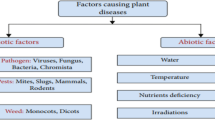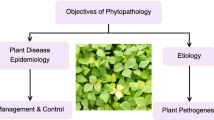Abstract
Seed freezing damage is an agricultural disaster, which has a great impact on seed quality assurance. The feasibility of combining hyperspectral imaging with deep convolutional neural network (DCNN) to classify different freeze-damaged corn seeds was studied in this paper. At first, the hyperspectral images of corn seeds subjected to five different freezing temperatures at 400–1000 nm were acquired, and then the average spectra were extracted from the region of embryo hyperspectral images over the wavelength range of 450–979 nm. Next, four models (K nearest neighbors (KNN), support vector machine (SVM), extreme learning machine (ELM), and DCNN) were developed for five-category (5 frozen conditions) and four-category (“no freezing,” “slight freezing,” “moderate freezing,” and “severe freezing”) classifications, and the values of the evaluation indexes (accuracy, sensitivity, specificity, and precision) were calculated for comparison. The results show that DCNN model had the most satisfactory result with accuracy rates of 100% (training set), 96.9% (validation set), and 97.5% (testing set) for five-category classification, with accuracy rates of 100% (training, validation, and testing set) for four-category classification, and DCNN model also had the best performance in the evaluation indexes. At last, the visual classification map was generated according to the results of DCNN. It shows that hyperspectral imaging and DCNN can provide a novel method to detect the freezing damage of corn seeds quickly and inexpensively.



Similar content being viewed by others
References
Akinyosoye ST, Adetumbi JA, Amusa OD, Olowolafe MO, Olasoji JO (2014) Effect of seed size on in vitro seed germination, seedling growth, embryogenic callus induction and plantlet regeneration from embryo of maize (Zea mays L.) seed. Niger J Genet 28(2):1–7
Ambrose A, Kandpal LM, Kim MS, Lee W, Cho B (2016) High speed measurement of corn seed viability using hyperspectral imaging. Infrared Phys Technol 75:173–179
Burges CJC (1998) A tutorial on support vector machines for pattern recognition. Data Min Knowl Disc 2(2):121–167
Chu X, Wang W, Yoon S, Ni X, Heitschmidt GW (2017) Detection of aflatoxin B1 (AFB1) in individual maize kernels using short wave infrared (SWIR) hyperspectral imaging. Biosyst Eng 157:13–23
Clevert, D., Unterthiner, T., & Hochreiter, S. (2015). Fast and accurate deep network learning by exponential linear units (ELUS). ar**v
de Sousa Fernandes DD, de Almeida VE, Fontes MM, de Araújo MCU, Véras G, Diniz PHGD (2019) Simultaneous identification of the wood types in aged cachaças and their adulterations with wood extracts using digital images and SPA-LDA. Food Chem 273:77–84
Egesel CÖ, Kahrıman F, Ekinci N, Kavdır İ, Büyükcan MB (2016) Analysis of fatty acids in kernel, flour, and oil samples of maize by NIR spectroscopy using conventional regression methods. Cereal Chem J 93(5):487–492
Huang G, Zhu Q, Siew C (2006) Extreme learning machine: theory and applications. Neurocomputing 70(1–3):489–501
Ioannidou A, Chatzilari E, Nikolopoulos S, Kompatsiaris I (2017) Deep learning advances in computer vision with 3D data. ACM Comput Surv 50(2):1–38
Ioffe S, Szegedy C (2015) Batch normalization: accelerating deep network training by reducing internal covariate shift. ar**v
Jia S, Yang L, An D, Liu Z, Yan Y, Li S, Zhang X, Zhu D, Gu J (2016) Feasibility of analyzing frost-damaged and non-viable maize kernels based on near infrared spectroscopy and chemometrics. J Cereal Sci 69:145–150
** X, Jie L, Wang S, Qi H, Li S (2018) Classifying wheat hyperspectral pixels of healthy heads and fusarium head blight disease using a deep neural network in the wild field. Remote Sens 10(3):395
Kimuli D, Wang W, Lawrence KC, Yoon S, Ni X, Heitschmidt GW (2018) Utilisation of visible/near-infrared hyperspectral images to classify aflatoxin B1 contaminated maize kernels. Biosyst Eng 166:150–160
Lee H, Kim M, Jeong D, Delwiche S, Chao K, Cho B (2014a) Detection of cracks on tomatoes using a hyperspectral near-infrared reflectance imaging system. Sensors 14(10):18837–18850
Lee W, Kim MS, Lee H, Delwiche SR, Bae H, Kim D, Cho B (2014b) Hyperspectral near-infrared imaging for the detection of physical damages of pear. J Food Eng 130:1–7
Liu Z (2020) Soft-shell shrimp recognition based on an improved AlexNet for quality evaluations. J Food Eng 266:109698
Liu D, Sun D, Zeng X (2014) Recent advances in wavelength selection techniques for hyperspectral image processing in the food industry. Food Bioprocess Technol 7(2):307–323
Liu Z, Jia X, Xu X (2019) Study of shrimp recognition methods using smart networks. Comput Electron Agric 165:104926
Lu Y, Yi S, Zeng N, Liu Y, Zhang Y (2017) Identification of rice diseases using deep convolutional neural networks. Neurocomputing 267:378–384
Manley M (2014) Near-infrared spectroscopy and hyperspectral imaging: non-destructive analysis of biological materials. Chem Soc Rev 43(24):8200–8214
Mavroforakis ME, Theodoridis S (2006) A geometric approach to support vector machine (SVM) classification. IEEE Trans Neural Netw 17(3):671–682
McClelland JL (2013) Integrating probabilistic models of perception and interactive neural networks: a historical and tutorial review. Front Psychol 4
McGoverin C, Manley M (2012) Classification of maize kernel hardness using near infrared hyperspectral imaging. J Near Infrared Spectrosc 20(5):529
Mo C, Kim G, Lee K, Kim M, Cho B, Lim J, Kang S (2014) Non-destructive quality evaluation of pepper (Capsicum annuum L.) seeds using LED-induced hyperspectral reflectance imaging. SENSORS 14(4):7489–7504
Nitish NS, Hinton GH, Kriz AK, Ilya IS, Salakhutdinov R (2014) Dropout: a simple way to prevent neural networks from overfitting. J Mach Learn Res 15:1929–1958
Qiu Z, Chen J, Zhao Y, Zhu S, He Y, Zhang C (2018a) Variety identification of single rice seed using hyperspectral imaging combined with convolutional neural network. Appl Sci 8(2):212
Qiu G, Lü E, Lu H, Xu S, Zeng F, Shui Q (2018b) Single-kernel FT-NIR spectroscopy for detecting supersweet corn (Zea mays L. Saccharata Sturt) seed viability with multivariate data analysis. SENSORS 18(4):1010
Rahman A, Kandpal L, Lohumi S, Kim M, Lee H, Mo C, Cho B (2017) Nondestructive estimation of moisture content, pH and soluble solid contents in intact tomatoes using hyperspectral imaging. Appl Sci 7(1):109
Riba Ruiz J, Canals T, Cantero Gomez R (2012) Comparative study of multivariate methods to identify paper finishes using infrared spectroscopy. IEEE Trans Instrum Meas 61(4):1029–1036
Santos MCD, Morais CLM, Nascimento YM, Araujo JMG, Lima KMG (2017) Spectroscopy with computational analysis in virological studies: a decade (2006–2016). TrAC Trends Anal Chem 97:244–256
Veeramani B, Raymond JW, Chanda P (2018) DeepSort: deep convolutional networks for sorting haploid maize seeds. BMC Bioinformatics 19(S9):289
Voulodimos A, Doulamis N, Doulamis A, Protopapadakis E (2018) Deep learning for computer vision: a brief review. Comput Intell Neurosci 2018:1–13
Wakholi C, Kandpal LM, Lee H, Bae H, Park E, Kim MS, Mo C, Lee W, Cho B (2018) Rapid assessment of corn seed viability using short wave infrared line-scan hyperspectral imaging and chemometrics. Sensors Actuators B Chem 255:498–507
Wang L, Sun D, Pu H, Zhu Z (2016) Application of hyperspectral imaging to discriminate the variety of maize seeds. Food Anal Methods 9(1):225–234
Williams P, Geladi P, Fox G, Manley M (2009) Maize kernel hardness classification by near infrared (NIR) hyperspectral imaging and multivariate data analysis. Anal Chim Acta 653(2):121–130
Woltz JM, Egli DB, TeKrony DM (2005) Freezing point temperatures of corn seed structures during seed development. Agron J 97(6):1564–1569
Woltz J, TeKrony DM, Egli DB (2006) Corn seed germination and vigor following freezing during seed development. Crop Sci 46(4):1526–1535
Yang X, Hong H, You Z, Cheng F (2015) Spectral and image integrated analysis of hyperspectral data for waxy corn seed variety classification. SENSORS 15(7):15578–15594
Zeiler MD (2012) Adadelta: an adaptive learning rate method. ar**v
Zhang J, Dai L, Cheng F (2019) Classification of frozen corn seeds using hyperspectral VIS/NIR reflectance imaging. Molecules 24(1):149
Zhao X, Wang W, Chu X, Li C, Kimuli D (2017) Early detection of Aspergillus parasiticus infection in maize kernels using near-infrared hyperspectral imaging and multivariate data analysis. Appl Sci 7(1):90
Zheng Q (2010) Influence of freezing injury on germination characteristics and structure of hybrid maize seed. Dissertation, Gansu Agricultural University
Zhong J, Qin X (2016) Rapid quantitative analysis of corn starch adulteration in Konjac Glucomannan by chemometrics-assisted FT-NIR spectroscopy. Food Anal Methods 9(1):61–67
Acknowledgments
We would like to thank the farmers from Changchun for providing the corn seed samples.
Funding
This research was funded by the National Natural Science Foundation of China (Grant No. 61873231 and No. 61573309).
Author information
Authors and Affiliations
Corresponding author
Ethics declarations
Conflict of Interest
Jun Zhang declares that he has no conflict of interest. Limin Dai declares that he has no conflict of interest. Fang Cheng declares that she has no conflict of interest.
Ethical Approval
This article does not contain any studies with human or animal subjects.
Informed Consent
Informed consent was obtained from all individual participants included in this study.
Additional information
Publisher’s Note
Springer Nature remains neutral with regard to jurisdictional claims in published maps and institutional affiliations.
Rights and permissions
About this article
Cite this article
Zhang, J., Dai, L. & Cheng, F. Identification of Corn Seeds with Different Freezing Damage Degree Based on Hyperspectral Reflectance Imaging and Deep Learning Method. Food Anal. Methods 14, 389–400 (2021). https://doi.org/10.1007/s12161-020-01871-8
Received:
Accepted:
Published:
Issue Date:
DOI: https://doi.org/10.1007/s12161-020-01871-8




